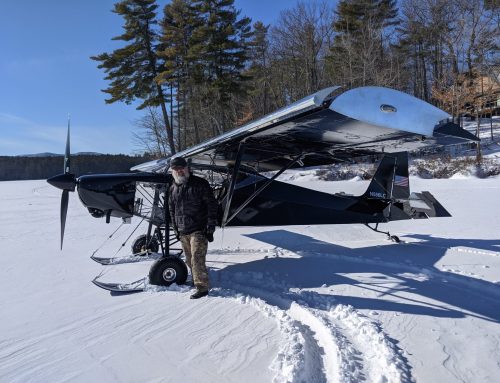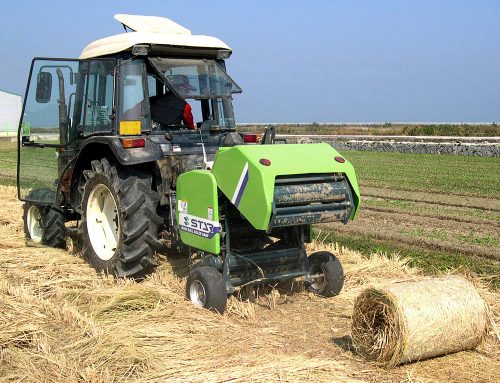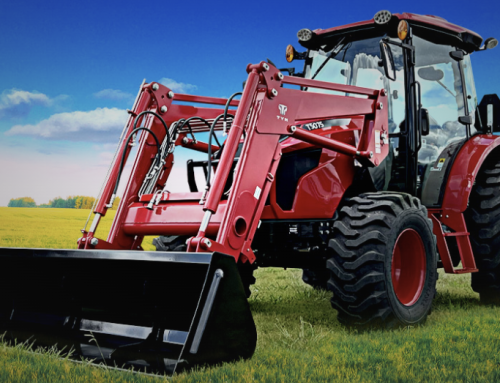Proper maintenance of hay equipment ensures peak performance, extends equipment lifespan, and saves costs on repairs and downtime. As the agricultural calendar turns, each season presents specific tasks crucial to keeping your machinery—particularly balers and mowers—in top shape. This seasonal guide by Small Farm Innovationswill walk you through the best hay equipment maintenance tipstailored for spring, summer, fall, and winter.
Spring: Pre-Season Inspection & Preparation
Spring marks the start of hay season preparation. Here are the essential steps:
1. Clean and Inspect Equipment
- Remove dust, debris, and old crop residue from every nook and cranny.
- Use compressed air or low-pressure washers to get into tight spots.
- Inspect for rust or wear on blades, belts, and chains.
2. Sharpen Blades and Knives
- Dull blades reduce cutting efficiency and increase fuel consumption.
- Sharpen or replace mower blades and baler knives before the first cut.
- Check for nicks or bends that could affect cut quality.
3. Check Lubrication Points
- Grease fittings on mowers, balers, and PTO shafts with fresh lubricant.
- Use high-quality lubricant suitable for the season and local temperature.
- Inspect moving parts like rollers and pickup tines for smooth movement.
4. Examine Tires and Hydraulic Hoses
- Look for cracks or leaks in hydraulic hoses and fittings.
- Inflate tires to recommended PSI levels to prevent uneven operation.
- Ensure valve stems are intact and leak-free.
5. Replace Worn Parts
- Assess guards, bearings, tensioners, and belts for damage.
- Replace any that show signs of fatigue to avoid mid-season breakdowns.
- Perform a full PTO shaft inspection and test the engagement system.
Tip from Small Farm Innovations: Start the season with a complete maintenance checklist. Schedule inspections before the busy harvest months to ensure reliability. Don’t forget to test run each machine to identify potential issues early.
Summer: In-Season Checks & Real-Time Troubleshooting
Summer is the peak of hay production. Daily checks can prevent costly downtimes.
1. Clean After Every Use
- Remove hay buildup around the baler chamber and drum mowerdeck to avoid fire hazards.
- Inspect cooling systems and radiators for blockage.
- Use air compressors to blow out debris from filters and grills.
2. Monitor Fluid Levels
- Check oil, transmission fluid, and hydraulic levels daily before fieldwork.
- Replace dirty, discolored, or low fluids promptly.
- Inspect for leaks around pumps and fluid reservoirs.
3. Watch for Noisy or Loose Components
- Unusual sounds may indicate loose chains, worn sprockets, or unbalanced blades.
- Tighten all bolts and check chain tension.
- Replace missing fasteners immediately to avoid compounding issues.
4. Calibrate Equipment Regularly
- Adjust baler tension to ensure uniform bale density.
- Align mower blades and adjust cutting height to field conditions.
- Monitor knotter performance to prevent mis-ties or bale damage.
5. Keep Spare Parts Handy
- Stock essential parts like blades, twine, net wrap, sprockets, and bearings.
- Keep mobile repair kits in the field with wrenches, grease, and emergency wire.
Key Point: Quick troubleshooting keeps your harvest on track. Seasonal maintenance for balers and mowersis not just about prevention but also adaptability. Summer is about vigilance, consistency, and rapid response.
Fall: Post-Harvest Overhaul & Repairs
Once the harvest is done, a deep inspection is vital before storage.
1. Deep Clean All Equipment
- Pressure wash mowers, balers, and tractors to remove all plant residue.
- Allow machines to dry completely before moving to the next step.
- Apply rust inhibitors on exposed metal parts.
2. Inspect for Damage
- Conduct a frame integrity check and inspect all welds.
- Look for punctures or tears in tires and damage to electrical harnesses.
- Use a flashlight to examine hidden areas for stress fractures.
3. Repair or Replace Worn Components
- Disassemble major components for thorough inspection.
- Schedule shop repairs before winter to avoid spring service backlogs.
- Replace worn twine arms, knives, plunger bearings, and gear assemblies.
4. Document Maintenance Activities
- Keep a detailed log of parts replaced, repairs conducted, and any observations.
- Note hours of use per machine and schedule future servicing.
5. Order Replacement Parts Early
- Analyze inventory needs and pre-order parts that typically wear.
- Take advantage of off-season discounts and avoid spring delays.
Pro Tip: At Small Farm Innovations, we recommend a post-season maintenance logbook. This proactive approach reduces spring surprises and helps manage costs.
Winter: Storage & Long-Term Preservation
Proper winterization prevents rust, pest infestations, and mechanical failure.
1. Store Indoors When Possible
- Machinery should be stored in a dry, enclosed space to avoid freeze-thaw cycles.
- If outdoor storage is necessary, use UV-resistant, breathable tarps.
2. Disconnect and Drain Fluids
- Drain fuel from carburetors or use stabilizer to prevent varnishing.
- Change engine oil and replace filters to remove corrosive residues.
- Flush and replace coolant if needed.
3. Grease and Cover Moving Parts
- Apply fresh grease to all zerks and rotating parts.
- Coat exposed metal with anti-rust spray or fogging oil.
- Use plastic covers or sealed bags for electronics and controllers.
4. Remove Batteries and Store Safely
- Disconnect and remove batteries from all machines.
- Clean terminals and store in a dry, warm environment on wooden surfaces.
- Periodically charge to maintain battery health.
5. Elevate and Block Tires
- Store equipment on wood blocks to prevent tire deformation.
- Check tire pressure monthly to reduce dry rot risk.
Winter Reminder: Consult the owner’s manual for model-specific winterization. Partner with trusted suppliers like Small Farm Innovationsfor long-term storage solutions and professional winter service packages.
FAQs About Hay Equipment Maintenance
- How often should I inspect my hay equipment?
You should perform a quick inspection before and after every use during the harvest season. Full maintenance should be conducted at the start and end of each season, with minor adjustments throughout. - What kind of lubricant should I use?
Use manufacturer-recommended lubricants and greases. In colder climates, consider multi-season or winter-grade products with anti-freeze additives. Grease high-wear areas more frequently during heavy use. - Why are my mower blades wearing out so quickly?
Possible reasons include poor blade quality, hitting debris or rocks, mowing at incorrect speeds, or improper blade angle. Use high-carbon steel blades and inspect fields before mowing. - Can I use generic parts for repairs?
While some generic parts may work, OEM or brand-recommended parts from trusted sources like Small Farm Innovationsensure compatibility and long-term performance. Generic parts can cause issues with fitment and warranty. - What tools should I always carry during haying?
Essential tools include:
- A full wrench and socket set
- Spare blades, twine/net wrap
- Grease gun and multi-purpose lubricant
- Wire cutters, electrical tape
- Field repair manual and first-aid kit
Conclusion
Your hay equipment is a major investment, and protecting it requires year-round attention. By following these hay equipment maintenance tipsand committing to a proactive, seasonal schedule, you’ll extend the life and efficiency of your mowers and balers. Whether you’re prepping for the season or winterizing your fleet, remember: the right maintenance today prevents the costly repairs of tomorrow.
Partner with Small Farm Innovationsto find the right tools, parts, service plans, and expert advice for your farm equipment needs. From compact operations to larger haying businesses, we help ensure every season works for you.




